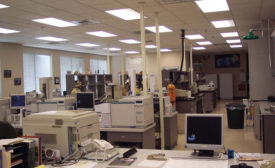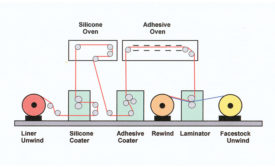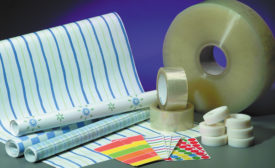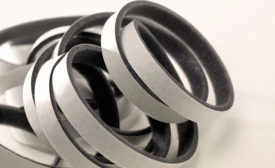Pressure-Sensitive Adhesives (PSAs)
When adhesive tape is found as evidence at a crime scene, it is the forensic scientist’s job to match it to its source with little or no knowledge of tape construction.
Read More
Biodegradable Polymers in Adhesive Systems
Many biodegradable polymers are suited for adhesive applications, such as environmentally friendly packaging, recyclable envelope adhesives and biomedical devices.
June 1, 2007
Safety First: Safe Handling of Adhesives and Sealants
While cured adhesives and sealants are generally considered safe, care must be taken with airborne particles, decomposition products, and uncured components.
March 1, 2007
Manufacturing Pressure-Sensitive Adhesive Products: A Coating and Laminating Process
How are pressure-sensitive adhesives made?
April 1, 2005
An Overview of Emulsion Polymers Used in the Adhesives Industry
Demand for adhesive emulsions is forecast to expand 4.4 percent per year to 2.3 million metric tons in 2005.
June 30, 2002
Hot-Melt Polyurethane Reactive Adhesives Targeted for Specific Applications
What are hot-melt polyurethane reactive adhesives used for?
January 26, 2001
Pressure-Sensitive Adhesive Testing
Testing pressure-sensitive adhesives under standard conditions of temperature and relative humidity is always a preferred means to compare data from lab to lab and from lot to lot, but it is sometimes necessary to evaluate the performance of an adhesive under conditions that it would encounter in the field.
September 11, 2000
Keep the info flowing with our eNewsletters!
Get the latest industry updates tailored your way.
JOIN TODAY!Copyright ©2024. All Rights Reserved BNP Media.
Design, CMS, Hosting & Web Development :: ePublishing






